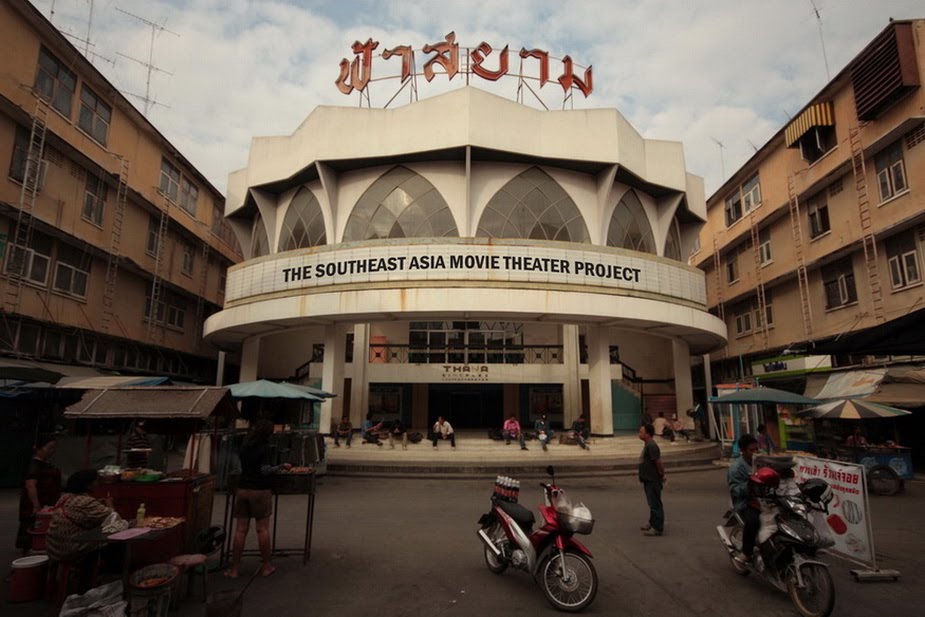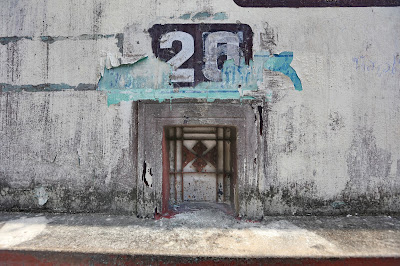My last trip to Myanmar for a theater survey was back in January, 2011. Five years ago. That netted me a huge amount of photographic content from Shan State, Magwe, Bago and Thanintharyi divisions. Ever since then I've been yearning to get back there to pick up where I left off. By my estimates, there are are still a solid 30 or 40 old theaters yet to be documented in Myanmar, a good portion of which may still be in operation. But that number is dropping fast.
After mulling it over, I decided that there's no better time than the present. Tomorrow, February 18th, I'm flying over to Yangon to start a third Myanmar movie theater survey. This trip will hopefully lead me trough Irrawaddy Division, then back up to Shan State, into Kachin State, back down through Sagaign, Mandalay, Magwe and Bago Divisions, and ultimately into Mon and Karen states. I'm not sure that all of that is possible given only 28 days, but I will do my best.
In addition to the survey there will be a photo exhibition of some of my past work in Myanmar opening on February 20th at Myanmar Deitta Gallery on 44th Street just off Merchant Road in downtown Yangon. All 15 images on display will be for sale to help offset the cost of this expedition.
The highlight of this exhibition will be a panel discussion on the important social and cultural role of the cinema hall. Aside from myself, panelists will include US Ambassador to Myanmar Derek Mitchell; Yangon Heritage Trust director Daw Moe Moe Lwin; Director of Urban Planning for the Yangon City Development Committee Dr. Toe Aung and Myanmar Motion Picture Organization Patron U Aung Lwin. Our talk will hopefully build awareness to the plight of the Waziya Cinema a classic downtown movie palace in Yangon which recently closed down.
Below are a collection of photos of Myanmar cinema halls that have either closed or been demolished since I was last there.
After mulling it over, I decided that there's no better time than the present. Tomorrow, February 18th, I'm flying over to Yangon to start a third Myanmar movie theater survey. This trip will hopefully lead me trough Irrawaddy Division, then back up to Shan State, into Kachin State, back down through Sagaign, Mandalay, Magwe and Bago Divisions, and ultimately into Mon and Karen states. I'm not sure that all of that is possible given only 28 days, but I will do my best.
In addition to the survey there will be a photo exhibition of some of my past work in Myanmar opening on February 20th at Myanmar Deitta Gallery on 44th Street just off Merchant Road in downtown Yangon. All 15 images on display will be for sale to help offset the cost of this expedition.
The highlight of this exhibition will be a panel discussion on the important social and cultural role of the cinema hall. Aside from myself, panelists will include US Ambassador to Myanmar Derek Mitchell; Yangon Heritage Trust director Daw Moe Moe Lwin; Director of Urban Planning for the Yangon City Development Committee Dr. Toe Aung and Myanmar Motion Picture Organization Patron U Aung Lwin. Our talk will hopefully build awareness to the plight of the Waziya Cinema a classic downtown movie palace in Yangon which recently closed down.
Below are a collection of photos of Myanmar cinema halls that have either closed or been demolished since I was last there.
Thida Cinema - Yangon. Closed 2013
Kemarat Cinema, Keng Tung, Shan State. Demolished 2012
Win Cinema, Toungoo, Bago Division. Demolished 2012
Shwe Mann Cinema, Yangon. Demolished 2012
Myoma and Shwe Gon cinemas, Yangon. Demolished 2012
King Cinema, Yangon. Demolished 2012




















